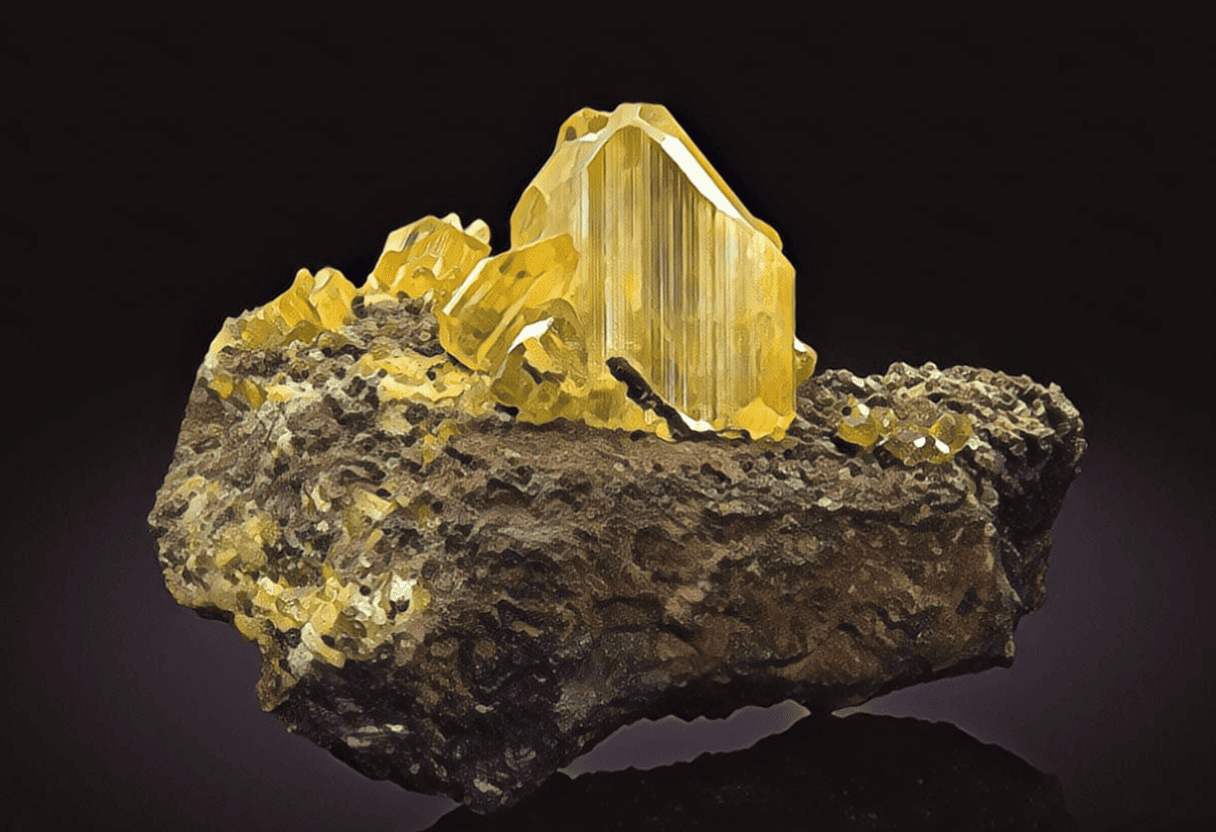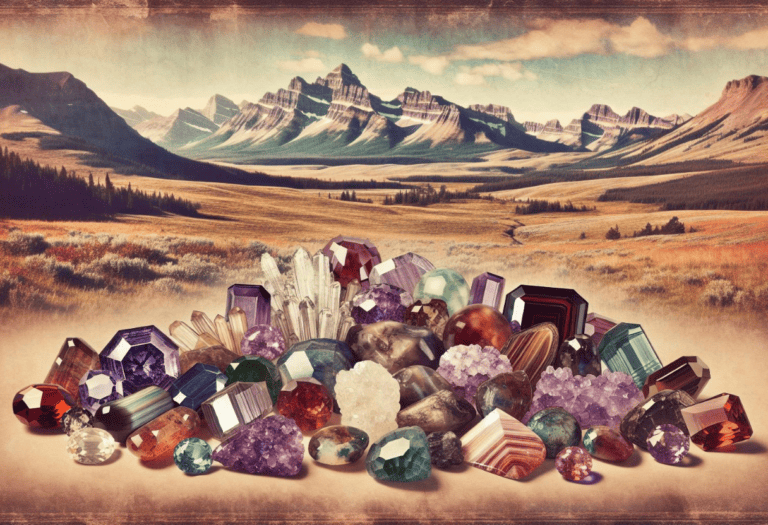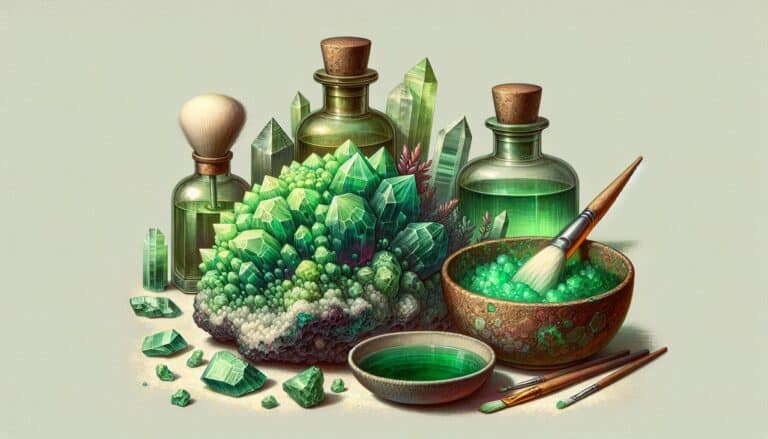If you’re a mineral enthusiast like me, you’ve probably marveled at the crystal clarity and luster of anglesite. It’s not just a pretty face in the world of minerals; its value can be quite intriguing. Today, I’m diving into the factors that determine how much anglesite is worth.
While anglesite may not be as well-known as diamonds or gold, its worth is influenced by a range of factors, from color and clarity to rarity and size. Understanding these can help collectors and investors alike make informed decisions.
Let’s peel back the layers and explore the true value of this captivating mineral.
Anglesite’s value hinges on color, clarity, rarity, and size. Vivid colors like deep blue or green fetch higher prices than colorless or pale hues. Higher clarity with fewer inclusions increases value, as does rarity. Larger, well-formed crystals are more valuable, especially those from renowned localities known for quality anglesite.
Factors Affecting the Worth of Anglesite
When I discuss anglesite’s worth, I’m often asked about the variances in its value. Let me clarify, several key factors significantly influence the worth of this sought-after mineral. Each aspect contributes to its final appraisal, and recognizing them is crucial for enthusiasts and investors alike.
Color is among the most noticeable features that affect anglesite’s value. Generally, the rule of thumb in gemstone valuation holds true for anglesite; more vivid and unique hues usually translate to higher demand and hence higher prices. For instance, a deep blue or green specimen of anglesite is likely to fetch a higher price than one that’s colorless or has a pale tint.
Moving on to clarity, anglesite’s worth escalates with its level of transparency and the absence of inclusions. Clear specimens are prized collectibles, often regarded as more desirable by collectors. Clarity can be subjective, but high transparency is a benchmark for quality in the market for anglesite.
Another monumental factor in determining its value is rarity. Anglesite, in its purest and most flawless form, is not a mineral you stumble upon every day. Localities known for producing quality anglesite are few, and specimens from these locations can be particularly valuable. As a tangible example, anglesite originating from lead mines in England and Morocco is often deemed more valuable due to its historical mining significance and superb crystalline form.
Finally, size plays a pivotal role as well. Larger stones invariably command higher prices, akin to the system applied in diamond valuation. This is partly because of the sheer impressiveness of a large, unblemished crystal, and partly because bigger specimens are rarer and therefore, hold more worth in the eyes of collectors.
To give you a broader understanding of how size impacts value, here’s a simple breakdown:
| Size Category | Approximate Value Range |
|---|---|
| Small (1-2 cm) | $20 – $100 |
| Medium (2-4 cm) | $100 – $500 |
| Large (4+ cm) | $500+ |
These price ranges are approximations and can fluctuate based on the interplay of all the aforementioned factors. It’s crucial to consider these aspects in unison to gauge an accurate assessment of anglesite’s worth.
Color: A Key Determinant
When I delve into the world of minerals, it’s clear that color is one of the most captivating features that catch the collector’s eye. Anglesite is no exception. The range of color in anglesite can vary significantly and it’s this variation that plays a pivotal role in its valuation.
Typically, you’ll find anglesite in hues spanning from colorless to white, often blending into shades of gray. However, the more desirable specimens exhibit a subtle yet enthralling array of blues, greens, and even yellows. These tones arise from impurities within the crystal structure, and when they occur naturally, they push the value up, especially if the colors are vibrant and uncommon.
In the market, it’s generally observed that anglesite with a deep, consistent color commands a higher price. It’s not just the intensity, but the uniformity of the color that casts a significant impact. For example, a piece where the color is well-distributed and free from blemishes is likely to be more sought after than one with uneven coloration or visible imperfections.
Moreover, some specimens of anglesite exhibit a phenomenon known as pleochroism, where the crystal displays different colors when viewed from different angles. This unique trait adds another layer of allure, often translating to higher collector interest and, subsequently, increased monetary value.
While color in anglesite is subjective and certain shades might appeal more to individual preferences, the general rule holds true: the more distinctive and aesthetically pleasing the color, the more valuable the specimen. Collectors and enthusiasts are always on the lookout for those rare pieces that stand out in color, as these not only make for striking additions to collections but also hold the potential for greater financial appreciation. So whether it’s the soft glow of a yellow hue or the deep richness of a blue tone, color unequivocally remains a key determinant in the worth of anglesite crystals.
Clarity: Seeing Through the Crystal
Clarity is another pivotal factor that affects the value of anglesite crystals. When I assess the clarity of anglesite, I’m looking for the absence of inclusions or any impurities that might obstruct the passage of light through the crystal. High clarity anglesite is highly sought after as it not only allows for an unobstructed view of the crystal’s internal structure but also enhances its luster and appeal.
In the world of gemstones, inclusions can be seen as flaws or as features that add character, depending on the type of stone and the market demand. For anglesite, however, the fewer the inclusions, the better. This is because anglesite’s allure is largely derived from its glass-like transparency, which can be dramatically reduced by the presence of too many inclusions. When valuing anglesite, I’ve noticed that specimens that combine both exceptional clarity and vivid color are particularly rare, driving their prices even higher.
- VVS (Very Very Slightly Included): Minute inclusions that are difficult to spot under 10x magnification.
- VS (Very Slightly Included): Minor inclusions somewhat easy to observe under magnification but generally invisible to the naked eye.
- SI (Slightly Included): Inclusions that are visible under magnification and might be seen with the naked eye.
- I (Included): Obvious inclusions that are clearly visible to the naked eye can detract from the stone’s clarity and overall aesthetic.
As a collector or investor, understanding these clarity grades is essential. I always recommend investing in a jeweler’s loupe or seeking professional appraisal, as the clarity of an anglesite specimen can drastically influence its market worth. The combination of a clear, inclusion-free stone with a dynamic color truly makes for a spectacular anglesite specimen.
Rarity: The Chase for the Uncommon
When evaluating the worth of anglesite, rarity becomes an essential factor. I’ve found that less common anglesite specimens can fetch significantly higher prices solely due to their scarcity. This can be linked to demand that outpaces supply, compelling enthusiasts and collectors to compete for the limited treasures.
Unique physical properties can catapult an anglesite piece into the realm of the rare. For instance, anglesite forms in a variety of environments, but finding it in perfectly formed crystal habits or in large sizes can be an uncommon occurrence. Such specimens are a serious find, adding a premium to their value.
Mining locations contribute to the rarity; for example, some mines are known for producing anglesite but have since ceased operations, making any pieces from these mines highly coveted relics. The most sought-after anglesite specimens often hail from renowned localities, becoming standout pieces for collectors worldwide.
| Location | Known For | Relative Rarity |
|---|---|---|
| Tsumeb Mine | Exceptional Specimens | Very Rare |
| Leadhills | Historical Pieces | Rare |
| Monteponi Mine | Unique Crystal Habits | Rare |
I pay close attention to market trends as they can sometimes provide insight into what may become the next sought-after rarity. Factors such as emerging markets, discontinued mines, and shifting collector interests can reshuffle the rarity scale, revealing new opportunities for investment or collection.
In my years of experience, I’ve also noted that rarity isn’t solely a matter of how many anglesite specimens exist. The channels through which they can be acquired, historical significance, and the stories they carry can amplify their rarity and desirability within the market. Collectors are not just buying a mineral; they are often investing in a piece of history, and with anglesite, that history can be as luminous and captivating as the crystals themselves.
Size Matters: The Bigger, the Better?
When collectors evaluate anglesite, size definitely does not go unnoticed. While smaller specimens are more common and can still be quite valuable, there’s a certain prestige attached to larger stones. Larger anglesite crystals not only provide a more impressive display but they’re also far less common, making them more collectible and thus, potentially more valuable. Unlike some minerals, where massive size can sometimes compromise clarity or color, excellent large examples of anglesite maintain their aesthetic and crystal properties, commanding attention—and premium prices.
That said, size isn’t always indicative of higher value. It’s critical to consider it alongside other factors such as clarity, color, and provenance. Even a large anglesite that ranks low in terms of clarity or has a less desirable color may not be as valuable as a smaller, more perfect specimen. My experience tells me that the magic happens when size intersects with high levels of clarity and appealing colors. That’s when we see prices soar, reflecting the rarity and desirability of such pieces.
To offer a perspective on the impact of size, I’ll provide a quick breakdown of how different sizes may influence the value of anglesite. Here’s a general guide I’ve put together based on market observations:
| Size Range (cm) | Relative Value Increase (%) |
|---|---|
| 1 – 2 | Baseline Value |
| 2 – 4 | 10 – 25% |
| 4 – 6 | 25 – 50% |
| 6+ | 50% and above |
Keep in mind that this table is a simplified guideline. Each anglesite specimen must be evaluated individually, considering all factors especially the color and clarity mentioned earlier. Even within similar size brackets, there can be significant variations in value due to these other characteristics.
Additionally, larger anglesite specimens have the advantage of being more versatile in terms of usage. While smaller crystals might be limited to jewelry or small decorative items, larger anglesite can be fashioned into impressive statement pieces or kept in their natural state as focal points in mineral collections. Their versatility in use also adds to their appeal and potential worth in the eyes of collectors and enthusiasts.
Conclusion: Buying & Selling Anglesite
Determining the worth of anglesite is a nuanced process that hinges on a blend of factors. Size may catch the eye, but it’s the harmony of clarity, color, and provenance that truly defines its value.
Remember, larger pieces may offer more versatility, but it’s the overall quality that ensures their prestige in the collector’s market.
Whether you’re an avid collector or a newcomer to the world of minerals, understanding these aspects is key to appreciating the true worth of anglesite.







